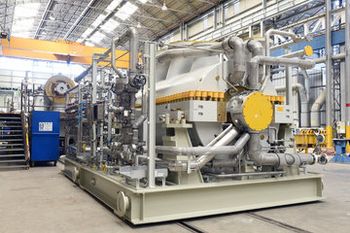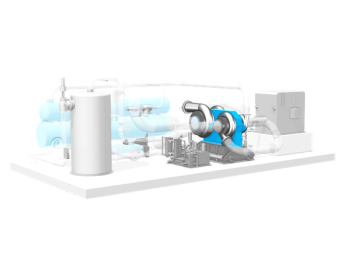
SpaceX Launches MethaneSAT to Detect Emissions from Orbit
The MethaneSAT detached from SpaceX Transporter-10 and will detect and quantify methane emissions over wide regions of the Earth’s surface.
SpaceX has announced the successful launch of its MethaneSAT emissions monitor, detaching from the SpaceX Transporter-10 to enter orbit around Earth. The satellite is designed to protect Earth’s climate by detecting methane emissions in oil and gas operations. MethaneSAT detached from the transporter just after 4:00pm PT on Monday, March 5.
MethaneSAT was developed by a subsidiary of the Environmental Defense Fund (EDF) and will detect and quantify total methane emissions over wide regions of the Earth’s surface—previously unattainable by other satellites. Data from MethaneSAT will allow companies and regulators to track emissions and give stakeholders free, near real-time access to the data. Citizens, governments, and investors will also have the ability to compare the results to emissions goals and obligations.
“Cutting methane pollution from fossil fuel operations, agriculture and other sectors is the single fastest way to slow the rate of warming as we continue to decarbonize our energy systems,” said EDF President Fred Krupp. “To do that requires comprehensive data on this pollution on a global scale. MethaneSAT will show us the full scope of the opportunity by tracking emissions to their source.”
Krupp announced the MethaneSAT at a 2018 TED Talk as part of the TED Audacious Project. EDF published a series of 16 independent studies that showed emissions across the U.S. oil and gas supply chain were 60% higher than EPA estimates at the time. The MethaneSAT is a direct result of the EDF’s published results.
Orbiting the Earth 15 times a day, MethaneSAT will measure changes in methane concentrations as small as three parts per billion. High sensitivity, high resolution, and a wide field of view will enable MethaneSAT to see the entire emissions picture. Interactive emissions data will be available on the MethaneSAT website and on the Google Earth Engine. The satellite was made possible by the support of EDF donors and a partnership with the Government of New Zealand.
“MethaneSAT’s superpower is the ability to precisely measure methane levels with high resolution over wide areas, including smaller, diffuse sources that account for most emissions in many regions,” said Steven Hamburg, EDF Chief Scientist and MethaneSAT project leader. “Knowing how much methane is coming from where and how the rates are changing is essential.”
Among the largest donors to MethaneSAT are the Bezos Earth Fund, Arnold Ventures, the Robertson Foundation, and the TED Audacious Project. In December of 2023, EDF joined with Bloomberg Philanthropies, The International Energy Agency, RMI, and the UN Environment Program’s International Methane Emission Observatory on an initiative to hold companies and governments accountable for their methane management.
In addition to detecting methane emission sources and rates for a given region, MethaneSAT will make it possible to compare emission loss rates across major oil and gas areas and performance over time. Specially developed analytics will trace these emissions back to the source within major target regions.
“You can’t manage what you can’t measure, and that’s certainly true when it comes to cutting methane, one of the biggest drivers of climate change,” said Michael R. Bloomberg, UN Secretary-General's Special Envoy on Climate Ambition and Solutions and Founder of Bloomberg LP and Bloomberg Philanthropies. “Data from this satellite will help us to better measure methane emissions and target their sources, bringing more transparency to the problem, giving companies and investors the information they need to take action, and empowering the public to hold people accountable.”
EDF also partnered with Harvard University’s School of Engineering and Applied Sciences, the Smithsonian Astrophysical Observatory, and the New Zealand Space Agency. The combined mission team has over 70 experts worldwide with experience in spaceflight, remote sensing, and data analytics. MethaneSAT was built in Colorado by the Space & Missions Systems unit of BAE Systems and Blue Canyon Technologies.
Newsletter
Power your knowledge with the latest in turbine technology, engineering advances, and energy solutions—subscribe to Turbomachinery International today.





